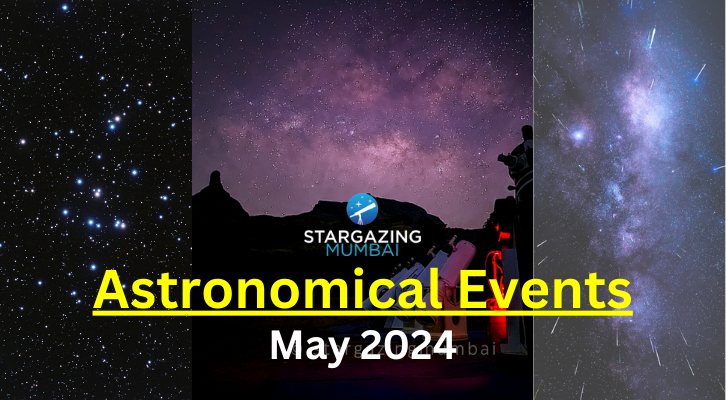A clear night sky is an awe-inspiring sight. But nowadays it’s difficult to find one as we’re met with glowing light polluted skies from the city.. The moon, our constant celestial companion, is a guiding light in this vastness, its silvery light casting a gentle glow. But did you know, now and then, the moon takes center stage and appears larger and brighter than usual? This celestial phenomenon is known as a Supermoon and it holds more secrets than you might think!
So, the next time you gaze up at the Moon, impress your friends and family with these facts.
Facts about the Upcoming Supermoons
It’s All About the Orbit:
Our lunar companion isn’t quite on a merry-go-round ride around Earth. Instead, it traces an elliptical path, like an elongated oval. This phenomenon creates a constantly changing distance between Earth and the moon. The closest point in this orbit is called the perigee. Now, imagine a full moon coinciding with perigee – that’s when the night sky animates with a Supermoon!

While “Supermoon” is a popular term, captivating audiences with its simplicity, astronomers have a more technical tongue twister – “perigee-syzygy.” This term refers to the specific alignment of the Sun, Earth, and Moon that creates this wondrous phenomena. Let’s be honest, though, “Supermoon” definitely wins in the catchiness department!
Frequent Night Sky Animater:
Supermoons are quite frequent visitors to our night sky. In fact, we can expect to be dazzled by their brilliance 4-6 times a year. Why? It all boils down to the moon’s elliptical orbit. Unlike a perfectly round track, the moon’s path around Earth is more like a stretched oval. This means the moon gets closer and farther away throughout its monthly loop..
However, not all perigee-syzygy are created equal. The size and brightness variations depend on how close the moon is to perigee during the full moon phase! The closer it gets, the more dramatic the perigee-syzygy effect.
Shrinking Giants:
This might come as a surprise, but Supermoons are slowly becoming a thing of the past. The moon is inching away from Earth at a rate of about 3.8 centimeters (1.5 inches) per year. This subtle shift might seem insignificant now, but it adds up over vast stretches of time. Fast forward millions of years, and our celestial companion won’t hold the same awe-inspiring presence it do today i.e., grand appearance, both in size and brightness.
So, the next time you hear about a perigee-syzygy approaching, don’t just glance up – take a moment to truly appreciate this celestial spectacle.
Tidal Teasers:
We all know that the moon plays a significant role in Earth’s tides. The gravitational pull of the moon creates high tides when it’s directly overhead and on the opposite side of the Earth. During a full moon, this effect is amplified.

So you might think a Supermoon would cause even more dramatic tides. While it’s true that the perigee-syzygy phenomena can cause slightly higher tides (by a fraction of an inch at the most), the difference is barely noticeable. Scientists consider themselves lucky if they can detect any change in tide levels at all.
Myths Debunked:
Throughout history, folktales and superstitions have associated full moons with strange and erratic human behavior. Terms like “lunatic” even stem from this belief. However, numerous scientific studies have debunked this myth. There’s no evidence to suggest that the celestial phenomena has any significant impact on human psychology or behavior.
So, rest assured, a Supermoon won’t turn you into a werewolf (sorry, Twilight fans!).
A Harvest Moon Tradition:
The term “Supermoon” is a relatively recent invention. But cultures around the world have observed and named full moons for centuries. One such example is the Harvest Moon, which typically occurs in September or October in the Northern Hemisphere.
This full moon is unique because it rises close to the time of sunset. This extended period of nighttime illumination provided farmers with valuable extra light for harvesting their crops before the onset of winter.
2024: A Year of Supermoons
While we haven’t quite reached the peak viewing season, 2024 holds several treats for skywatchers. This year boasts four full Supermoons, each offering a slightly larger and brighter lunar display compared to a typical full moon. Here’s a quick guide to these celestial occurrences:
August 19th:
The first full Supermoon of 2024 graces the night sky on August 19th. During this time, the Moon will be closest to Earth in its elliptical orbit, appearing around 14% bigger and 30% brighter than usual.
September 18th:

This Supermoon coincides with another astronomical event – a partial lunar eclipse! On September 18th 2024, skywatchers will be able to witness a portion of the Moon’s surface darken as it enters Earth’s shadow. This Super Harvest Moon, as it’s traditionally known, promises a captivating sight.
October 17th:
This one holds the distinction of being the closest full Supermoon of 2024, offering the most dramatic increase in apparent size. It’s also known as the Super Hunter’s Moon, a name reflecting its historical significance for nighttime hunting activities.
November 15th:
The year wraps up with a final Supermoon on November 15th. While not quite as close as the one seen in October, it still provides a chance to admire the Moon in its full glory.
To know more about the major astronomical events in 2024, consider reading: Amazing Astronomical Events in 2024
So, the next time you witness a perigee-syzygy, appreciate the celestial phenomena playing out before you. It’s a reminder of the moon’s intricate relationship with Earth, a relationship that has played a profound role in shaping the history of our planet. Furthermore, the predictable rhythm of lunar phases has guided agricultural practices for millennia, with farmers relying on the moon’s cycle to plant, harvest, and adapt their methods. So, the next time you witness a Supermoon, appreciate not just its beauty, but the profound story it tells about our Earth.



